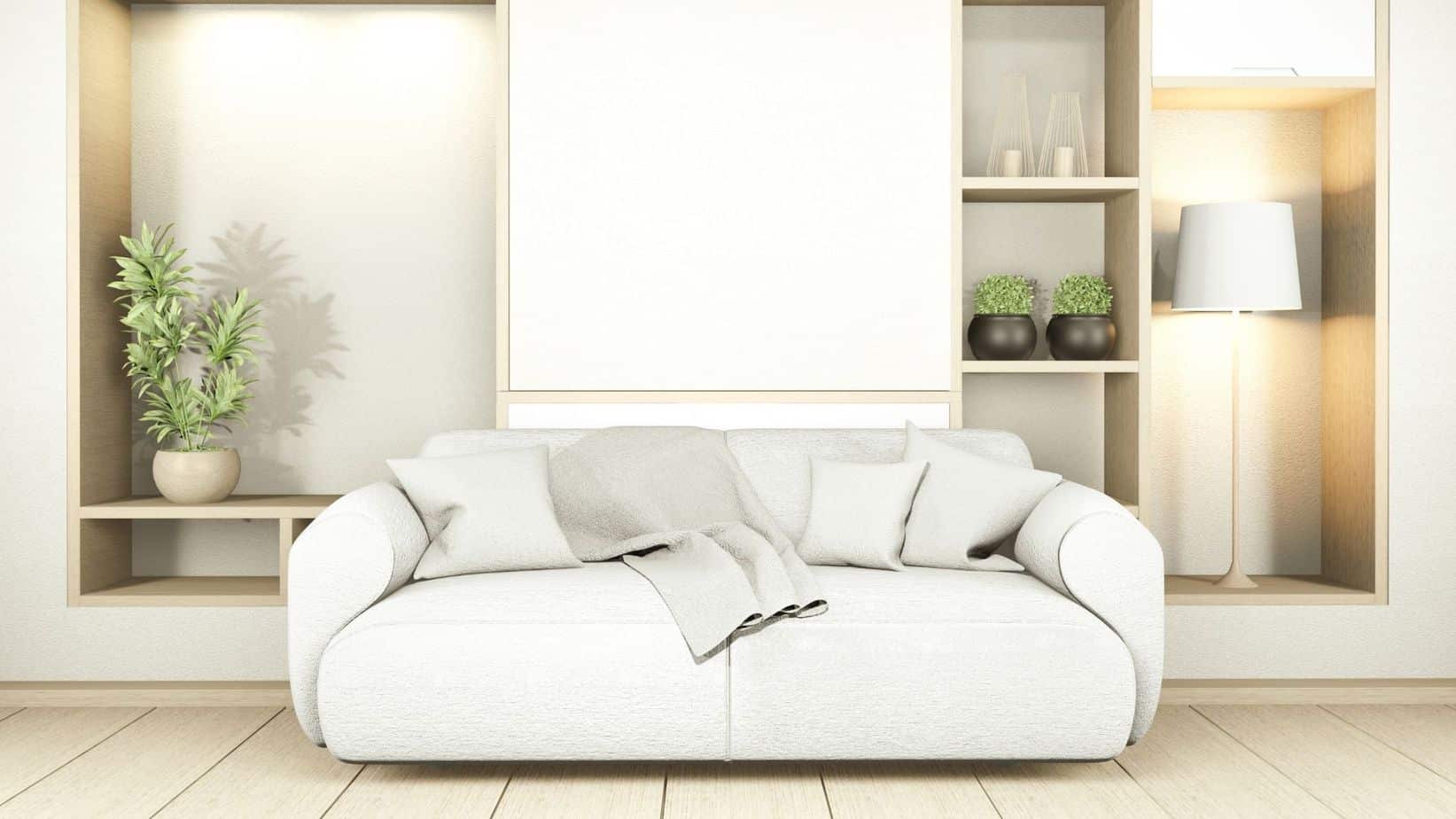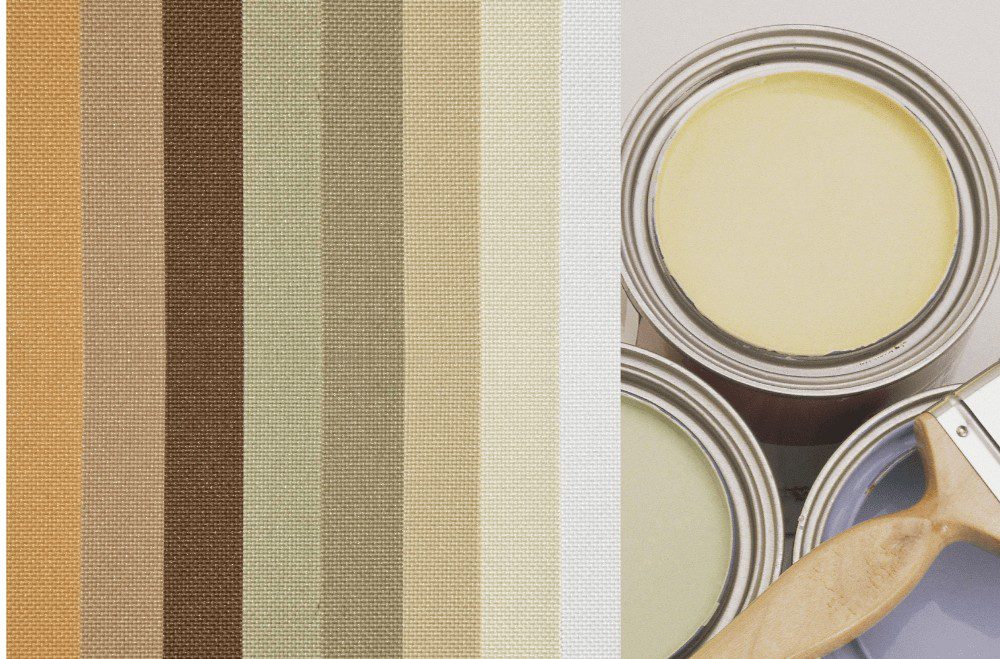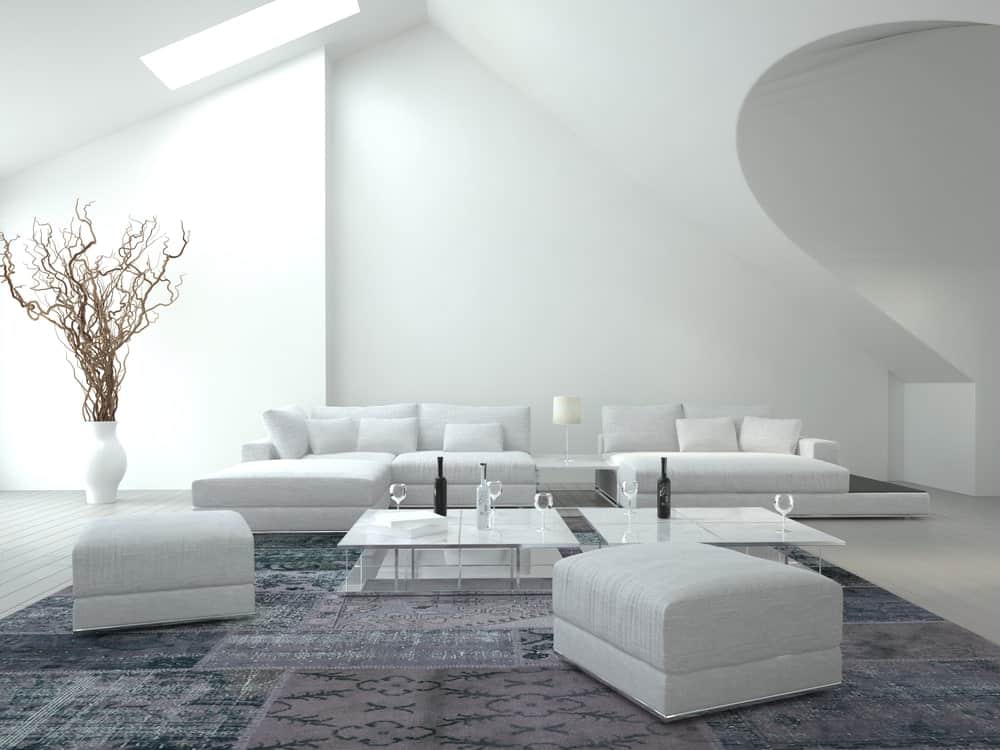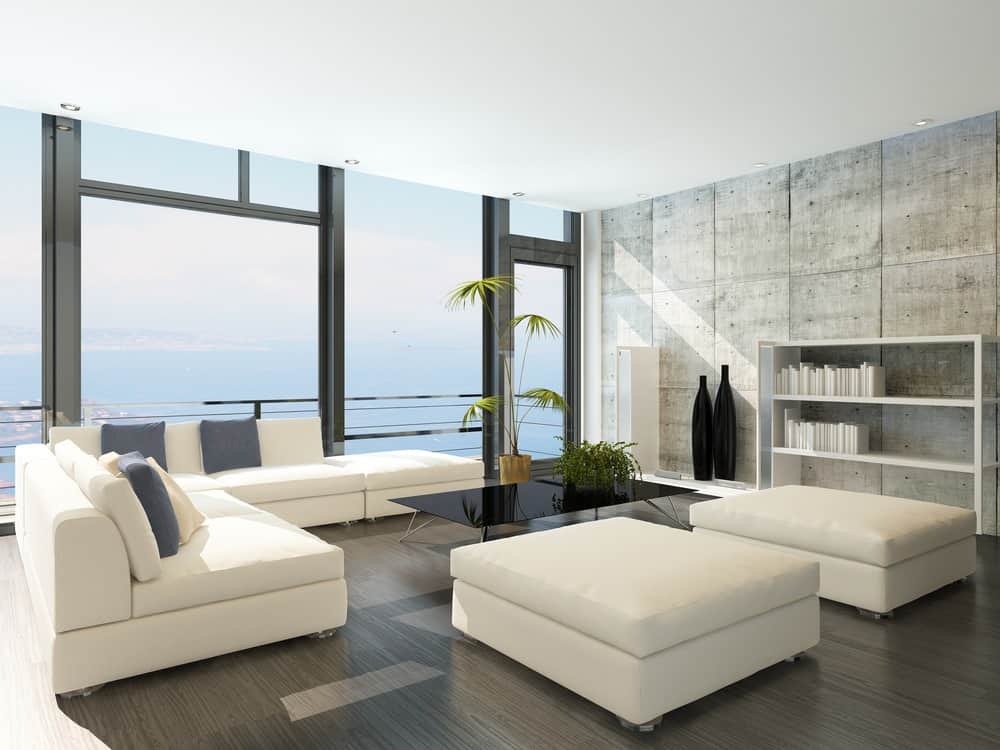
Have you ever heard of a Japanese living room? It takes the clean and traditional feel of a Japanese home to create a simple and uncluttered design. If you like neutral colors and smooth lines, this style may be for you!
Without a doubt, Japanese culture stands out as one of the most unique and dominant forces in today’s trends. The global reach of Japanese culture is phenomenal, ranging from the unique street style of Harajuku to the distinct interior design trend.
But where did this unique culture come from? For over 220 years, Japan was isolated from the rest of the world during the Edo period. Having no contact with the outside world, Japanese culture flourished on its own.
Nowadays, Japan has a unique blend of traditionalism and a forward-thinking attitude. Many of their values and ideals are rooted in traditionalism, yet they lead the way with technology, fashion, and pop culture trends.
The house is no exception to Japan’s influence. What many know as Japanese minimalism, the interior design style is trendy, modern, and clean-looking. Perfect for apartments where you don’t have much room or have to keep clutter minimized, a Japanese living room may be the solution you’ve been looking for.
What is a Japanese Style Room?
When you think of a Japanese-style room, think of minimalism. This is the most important aesthetic of a Japanese living room, where you instantly feel serene upon stepping foot inside the home.
Designing a Japanese-style room requires a ton of thought for every item purchased. Each thing in the room must have a function. To avoid clutter, always consider what purpose the item completes for the room or what it is trying to achieve.
Overall, the room should appear simple. Anything considered excess should find a new home. Oftentimes, since Japanese homes trend towards the smaller side, the room can look compact. This style aims to keep everything organized so that the room doesn’t appear busy or cluttered. If you can’t commit to recycling and donating things you won’t use anymore, then it is a good idea to try putting everything in storage units for a short while to see what you can and can’t live without.
The Japanese believe that energy should move freely throughout a room. Keeping everything low and streamlined creates this effect. The room should always be a place of tranquility, with lots of space to breathe and relax. Even if a room is small, it can still feel open and big.
You will find Earth as the main inspiration behind a Japanese living room in terms of design choices. Neutral and soft colors, along with lots of wood, fill up the room. Lots of light emits throughout, always soft and warm.
Upon stepping into a Japanese-style living room, you will notice the difference immediately. The style employs different layouts and types of furniture and gives off an overall different mood than any Western-influenced design.
Why You Should Choose a Japanese Living Room

Clean and minimalistic sounds appealing for many reasons. If you like a space without a lot of clutter, Japanese design agrees wholeheartedly. As mentioned earlier, this style works for small spaces that can’t afford to be messy. By removing surfaces to place things and cabinets to hold items, you are forced to keep items to a minimum.
In a way, it is good for ‘messy’ people as well. The style of the room will force you to keep things in order and won’t allow space for many items to stay. Everything must have a place in Japanese design!
Beyond the appearance of the room, the Japanese style also emits a way of life. It does not promote consumerism, and the items in a room don’t matter. The overall feeling of the room is the core concept.
Think about the Marie Kondo method that has taken the world by storm. Rooted in Japanese culture and design, she believes that every item in the home should spark joy. By going back to the bare principles, you can live a clean and uncluttered life.
A Japanese living room may not emit cozy feelings. With clean lines and minimal accents, it’s a trendy yet serene place to rest for a moment. It may not be suited for family rooms or entertainment centers. Instead, it praises balance and natural beauty.
How to Design a Japanese Living Room
Now for the fun part! If you’re sold on creating a Japanese-style living room, you can choose the furniture, decorations, and elements to add to the ambiance.
If you have a small space or your living room has multiple functions, you can also consider zoning. This is when you consciously designate different areas of the room for different activities. For example, you may have a desk and couch in your living room. Make sure the area for relaxing is entirely separate from the area for working.
Paint and Colors

Two rather different concepts are at play in Japanese-style interior design: light tones and deep contrast. So how exactly does this work?
When painting walls, keep colors to one shade and simple. This usually means avoiding accent walls and super-stylized wallpaper. Think of lots of browns and tan colors.
All the background colors of the room should remain neutral and light. This includes the floors, walls, and ceilings. The other elements of the room, such as the décor and furniture, can feature darker tones and a pop of color.
All inspiration should hail from outside. Think of natural colors and textures from the outdoors, including muted greys, soft neutrals, and a hint of greenery. The style favors earthy tones rather than any flashy and vibrant colors.
But because Japanese-style living rooms are so minimal and neutral looking, they are easy to incorporate into any home’s design.
Japanese Living Room Furniture

When it comes to furniture, quality goes a long way in a Japanese living room. The style prides itself on high-quality craftsmanship. All pieces are meant to last a lifetime, built with the best materials, and crafted with precision. However, that isn’t always in everyone’s budget! You can easily replicate the Japanese style by carefully selecting pieces and being patient until you find the right furniture.
Traditionally, furniture in a room is sparse. With Western influence, chairs didn’t become normal in Japanese households until recently. Instead, Japanese people would sit on the floor to eat and socialize. Even beds would be foldable mattresses they would pull out on the floor.
Nowadays, you will likely find chairs and all sorts of furniture in the house, but low seating remains a common practice. Picture short chairs, tables, and sofa legs. This creates the illusion that the room is bigger than it is. Some say it also brings you closer to the earth and nature. When shopping for furniture, keep things low! This includes any sofas, chairs, coffee tables, side tables, and storage units.
Since nature is the main inspiration behind the Japanese style, wood is by far the most common material used for furniture. Avoid anything industrial-looking, such as metal and plastic. Furniture that you can hide is also popular. Think about cubed chairs that tuck away or benches that open up for storage. Out of sight, out of mind!
To keep things open, try not to have sofas or chairs with armrests. Letting energy (and the eye) move freely throughout the room will help to keep things spacious looking.
Wall Hangings
In many Western homes, we are tempted to cover up all wall space with gallery walls, bookshelves, and all sorts of décor and knickknacks. However, the opposite should happen in a Japanese-style living room!
To keep in theme, all paintings should be minimalistic. The focus of the art should be front and center, with everything in the background kept to a minimum or completely blank. Avoid any types of landscapes or European-style paintings, as they appear too busy.
Instead, look for simple paintings and pictures representing nature, such as birds, bamboo, and other plants. Symbols and Haiku, Japanese short poetry, can also be featured. Wall stickers are also rising in popularity for modern Japanese living rooms. Popular in Japan, they are completely removable and shouldn’t leave any residue behind. Since a lot of Japanese rent their homes rather than own, using a peel-and-stick adhesive such as a bamboo design like this one https://www.stikwood.com/products/vertical-caramelized-bamboo is going to be perfect for achieving that gorgeous simplistic design that Japanese home decor offers.
Keep in mind this is not a traditional style as you would normally want to keep everything low to the ground (wall stickers included.)
Plants
Taking inspiration from nature, the Japanese style loves adding plants to a room. Plants sure are making the rounds in most households, adding texture and life to a room instantly.
One of the most common plants you will see is a bonsai. Part art and part science, a bonsai is a miniature tree grown in a small container. Many different types of trees can be grown in a bonsai style. Other common plants include bamboo and orchids. That being said, any plant will connect nature to the room and act as a burst of color in a mostly neutral space.
If you don’t have a green thumb, don’t despair! There are many high-quality fake plants that you can sneak into your Japanese living room without anyone noticing. The green and natural effect of the plant will appear the same as a living houseplant.
Rugs

In a traditional household, you will likely find tatami mats. Made from dried and woven rush plants, they would completely cover a Japanese household. However, they aren’t meant to have furniture on them as they will leave dents. Oftentimes, modern Japanese homes will reserve a room with tatami mats for shrines or to display art.
You can use tatami mats in the living room without furniture on top to bring a neutral tone to the ground, which is great for high-traffic areas. Bamboo rugs are another wonderful option, more durable than tatami mats but still smooth to the touch. Otherwise, you can feel free to play with all sorts of rugs to soften the room. Remember to keep things neutral and not busy, avoiding bright colors and patterns for your rug.
Decorations
Always think of minimalism when decorating. You do not need to heavily decorate the coffee table, side table, or shelves when it comes to a Japanese living room. Open shelves are encouraged, and displayed with naturally inspired materials, like clay, glass, rice paper, and other natural elements.
When choosing pillows, you can choose some colors to contrast your walls. Opt for natural fabrics such as cotton and linen. You can even add a few pillows to use around the coffee table for a traditional Japanese feel!
Another common decorating technique you probably have seen is privacy screens at many Japanese restaurants. Shoji Japanese screens offer privacy but still appear light and airy. Often made with geometric designs, they can come as sliding door versions or stand up on their own.
Lighting

Many don’t consider lighting a priority when it comes to decorating, but don’t dismiss it! The right lighting can completely set the tone of a room. Diffused lighting helps to maintain that soft, tranquil feeling of a Japanese living room. You don’t want anything too harsh, avoiding overhead lighting if possible.
Once again, avoid any industrial-looking materials such as metal and plastic. Instead, aim for fabric or even paper lampshades and lanterns. Rice paper or bamboo lamps look beautiful and delicate. When purchasing lights, regular geometric shapes are best, including rectangles, squares, and spheres.
Ambiance

Finally, you’ve got the final touches. Once you have the paint colors, furniture, and decorations figured out, a few extra items can help create that serene ambiance.
Ensure that all senses of the room are covered. In terms of sound, a Japanese living room is a place to be quiet and peaceful. Picture reading a book rather than watching an action movie. Avoid installing speakers and instead opt to open the window for ambient sounds from nature.
Scent can also be adapted. You want to incorporate natural smells into the room. While incense is the most popular for a traditional Japanese room, you can also promote general relaxing scents. Consider lighting lavender, jasmine, or vanilla candles to finish things off.
All in all, decorating should be fun. Feel free to take as much or as little Japanese influence into your design. While aesthetics are important, the overall mood of Japanese style should be the main aspect to consider. Keep things minimal, clean, and relaxing!
FAQ
How to properly sit in a Japanese living room.
To sit properly in a traditional Japanese living room, one must first remove their shoes before entering and sit on cushions or mats known as “tatami.” The customary posture is to fold your legs underneath you or cross them in “seiza” position.
To sit in seiza without experiencing discomfort, one can opt for sitting with legs outstretched or with one leg tucked. It is important to avoid showing the soles of your feet to other people or tokonoma.
As a sign of respect, make sure to bow while entering and leaving the room.
Keep in mind Japanese customs and be respectful when occupying traditional living spaces.

